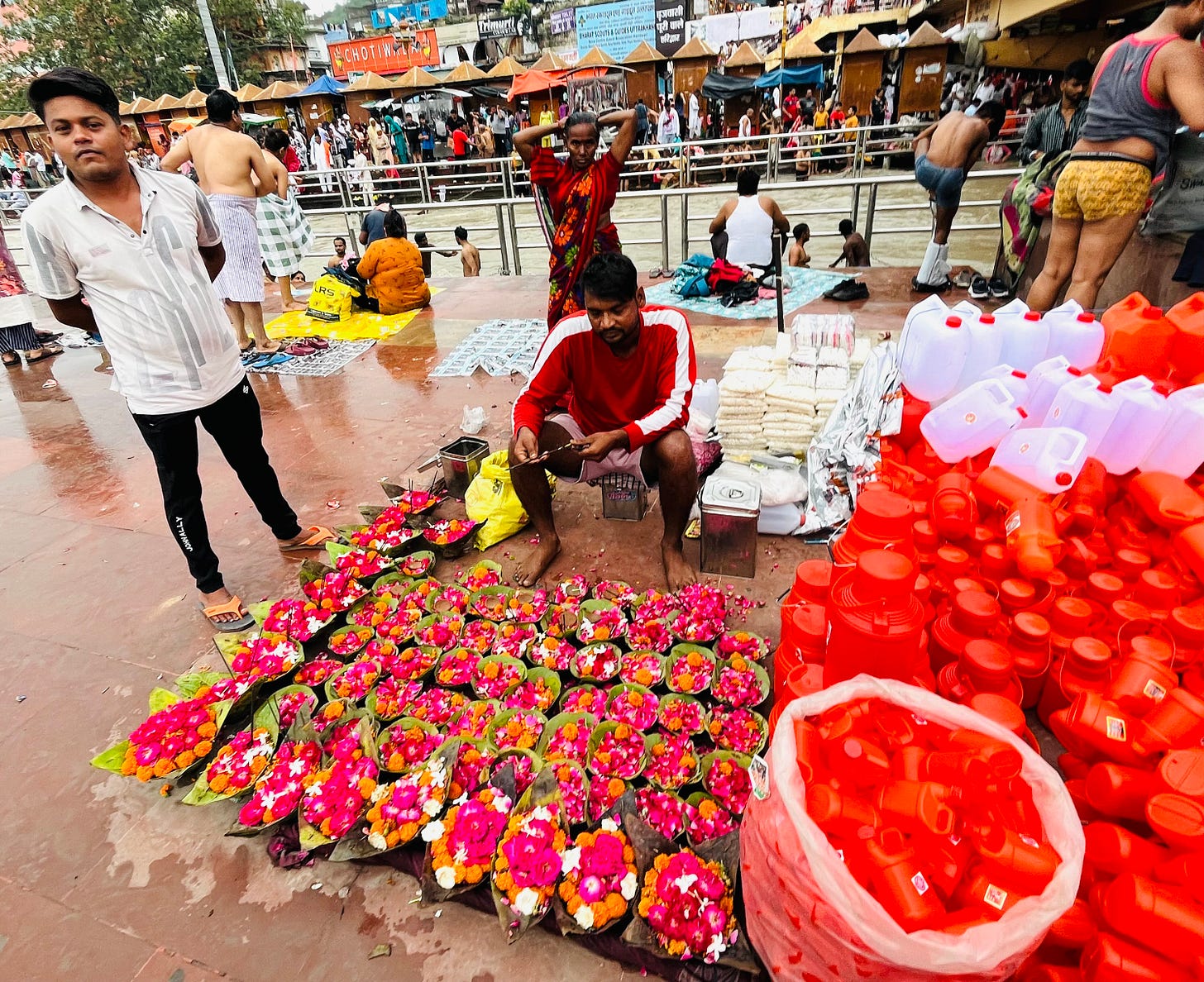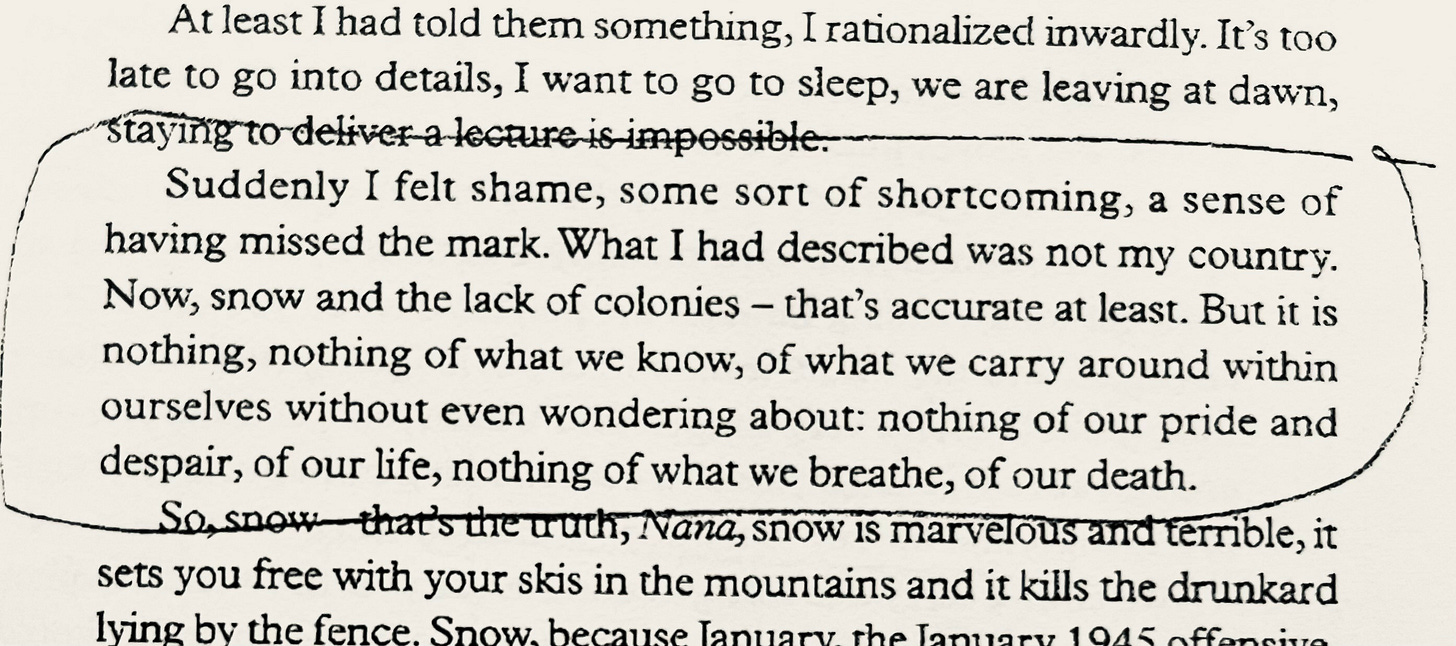My trip in India is coming to an end.
This picture is from the early days of this trip. I was in Haridwar and had decided to take this photograph because I was taken by two kinds of red so close together: red roses and red plastic bottles for the sacred gangajal. There has been plastic everywhere on the Ganga. Even yesterday, on that boat ride in the Sundarbans, I couldn’t often see any other human being for miles but there would be an empty plastic bottle floating in the river. We are a stupid, uncaring, callous lot. I learned that lesson over and over again on this trip. Others who are wiser and more learned than me seem to think the same. I spoke today to Sugata Hazra who has been studying oceans and rivers for decades and he said that in 2015 there was flooding before extreme drought and in 2023 the same pattern is being repeated. Conditions in 2024 will be worse. Earlier, there used to be one or two major cyclones in ten years; now we have two such cyclones in one year. But, Hazra said, we continue fighting and negotiating, and schoolkids will be directed by NGOs to make posters, and folks like me will write articles from which people will learn how serious things are and they will still go shopping malls. What is one to do then? For writers and artists like me, Professor Hazra had some advice. Instead of making sci-fi films like Avatar, we should write novels that refine our perception of nature. Why do you feel happy when you sit beside this green grass, he asked, pointing to the lawns next to us. He wanted to emphasize the link to something larger, and also the symbiotic relationship that binds us to the world around us, a world where not everything has been either monetized or weaponized. Before he began to study the oceans and rivers, Hazra has worked as a geologist. He said that as a geologist he knows that humans have been living for a very short time. We are a very young species and we are destroying ourselves and others. There are many, many other species on this planet and even when we are gone they will probably go on living and they will regenerate this planet. But if humans are to live, we have to stay in harmony with nature. I think this bit of gyaan or wisdom is worth repeating as many times as we can.
I had read somewhere that Charlotte, Viscountess Canning, wife of the governor general and, like me, an amateur watercolorist, who had come here in 1860 had written: “I now feel I have seen India.” I cannot make that claim, of course. I had wanted to make a trip through some of the towns and cities on the Ganga, and, as I have said before, I also wanted to feel closer to their memory of my father who died this past March. I had cremated my father at Manikarnika; I went to Banaras and, as I have recorded during an early entry, I agonized over revisiting the site. I’m so glad that my Substack found generous readers. Thank you for coming with me on this trip.
I want to add one more thing. In my nonfiction classes I teach a piece by Ryszard Kapuscinski called “Snow in Ghana.” It is an account of his stay overnight at a village in Ghana after his car’s tires have blown out. The head of the village, the nana, wants to know what is snow. He wants to know more about Poland. Kapuscinski makes an attempt to be accurate but he is haunted by the inadequacies of his account in that unknown Ghanaian village. (Having said what I have said, what have I really said? There is so much more!) This is one of the paragraphs in the essay “Snow in Ghana” that I emphasize in my discussions with students and I want to leave you with this more open, more ambiguous ending:
Which is all to say: my trip is ending but I will continue to search and travel in my writing. Here’s to more adventures.




Two questions for me to continue to ask myself: Why do I feel happy when I sit beside this green grass? And, what do I carry around within myself, without even wondering about it? Thank you, Amitava, for the trip. I am so happy I was able to go along.
Beautiful ❤️